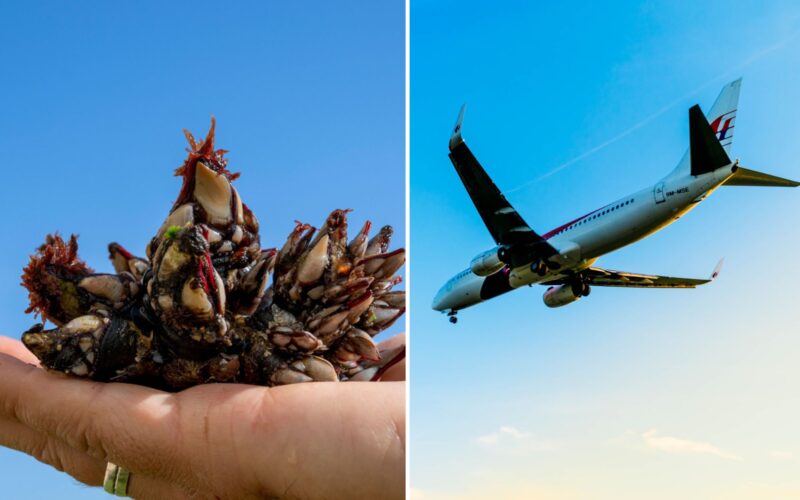Could barnacles hold the key to one of aviation’s biggest unanswered mysteries?
A group of scientists have developed a new technique that can reconstruct the drift path and origin of debris from the ill-fated flight MH370, which disappeared in March 2014.
The method, which was published in AGU Advances, was inspired by a flaperon that belonged to the aircraft. The flaperon washed ashore on Reunion Island covered with the barnacle Lepas anatifera in July 2015.
“The flaperon was covered in barnacles and as soon as I saw that, I immediately began sending emails to the search investigators because I knew the geochemistry of their shells could provide clues to the crash location,” one of the scientists, Associate Professor Gregory Herbert from the University of South Florida said in a press statement.
Barnacles grow their shells daily, producing layers similar to tree rings. The chemistry of each layer is determined by the temperature of the surrounding water at the time it was formed.
Herbert has previously used the method to determine the ages and extinction risk of giant horse conchs and investigate the environmental circumstances surrounding the disappearance of the Jamestown colony.
Herbert explained that French scientist Joseph Poupin, one of the first biologists to look at the flaperon, suggested that the biggest barnacles might have settled on the aircraft piece shortly after the crash and the crash site was located not far from where the part was found.
“Sadly, the largest and oldest barnacles have not yet been made available for research, but with this study, we’ve proven this method can be applied to a barnacle that colonized on the debris shortly after the crash to reconstruct a complete drift path back to the crash origin,” Herbert said.
Malaysia Airlines Flight 370 was an international passenger flight en route to Beijing from Kuala Lumpur that disappeared on March 8, 2014.
Nine years on, it still remains one of the biggest mysteries in modern aviation history.

